Introduction to Autism and Complementary Therapies
Autism Spectrum Disorder (ASD) is a complex neurodevelopmental condition characterized by challenges in social interaction, communication, and repetitive behaviors. While therapies like Applied Behavior Analysis (ABA) have become foundational in managing autism symptoms by targeting behavior through structured learning, researchers and families alike are exploring complementary therapeutic options to support overall health and well-being. Among these, camel milk has received increasing attention for its unique nutritional and immune properties that may benefit children with autism. This article explores the scientific and clinical insights into camel milk's role as a complementary intervention in autism care, examining its effects on behavior, immune function, and oxidative stress.
Understanding Behavior Analysis in Autism Therapy
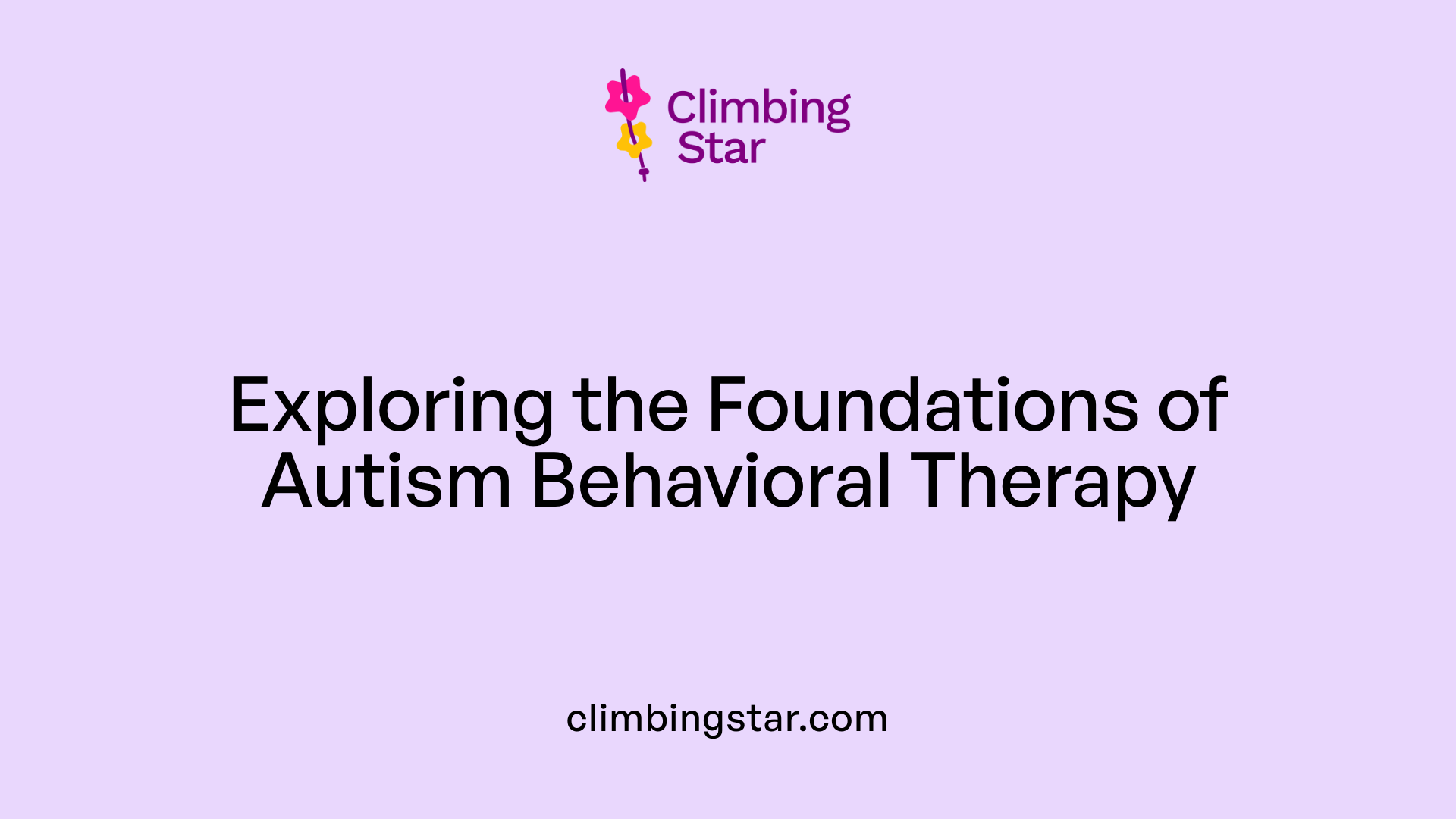
What is autism therapy focused on behavior analysis?
Autism therapy focused on behavior analysis, widely known as Applied Behavior Analysis (ABA), is a scientifically validated approach designed to enhance specific behavioral skills in individuals with autism. By applying fundamental principles of learning and reinforcement, ABA aims to increase positive behaviors like communication and social interaction while reducing challenging behaviors.
Definition and purpose of behavior analysis therapy
Behavior analysis therapy involves a thorough assessment of an individual’s strengths and challenges to develop a customized intervention plan. The main purpose is to teach essential skills through structured techniques, ensuring that progress is measurable and consistent over time.
Role of Applied Behavior Analysis (ABA) in autism care
ABA serves as a foundation in autism care by using positive reinforcement to encourage desired behaviors. It relies on repetitive practice and carefully monitored outcomes to shape behaviors that greatly improve daily functioning and independence for people with autism.
Techniques and settings used in behavior analysis therapy
Therapy sessions may take place in diverse settings such as clinics, homes, or schools. Techniques include discrete trial training, natural environment teaching, and pivotal response training, each tailored to the individual's needs. Trained therapists or behavior analysts deliver these interventions, adapting strategies as the individual progresses.
Overall, ABA represents a structured and evidence-based method that supports individuals with autism in achieving meaningful improvements in communication, social skills, and adaptability.
Camel Milk's Unique Nutritional Profile

How does the nutritional content of camel milk compare to cow's milk?
Camel milk stands out for its superior nutritional profile when compared to traditional cow's milk. It contains higher levels of vitamin C, iron, and calcium, nutrients crucial for immune function and overall health. This unique composition supports better nutrient absorption and provides immune benefits not commonly found in cow's milk.
What vitamins, minerals, and antioxidants are present in camel milk?
Camel milk is rich in essential vitamins and minerals such as vitamins B and C, iron, and calcium. It also contains potent antioxidants including lactoferrin, immunoglobulins, lysozymes, lactoperoxidase, and bioactive peptides. These components collectively contribute to its ability to protect against oxidative stress and boost the immune system.
How do these components support immune function and overall health?
The vitamins and minerals in camel milk help strengthen the body's natural defenses by supporting immune cell function and promoting healing. Its antioxidants reduce reactive oxygen species (ROS), which are linked to inflammation and cellular damage. Furthermore, camel milk’s immunoglobulins and lactoferrin possess antimicrobial properties that combat infections more effectively, notably due to the smaller size of camel antibodies which allows them to penetrate tissues efficiently.
These combined nutritional factors make camel milk a functional food that not only nourishes but also aids in enhancing immune response and reducing inflammation, contributing positively to overall health.
Immune System Benefits of Camel Milk in Autism
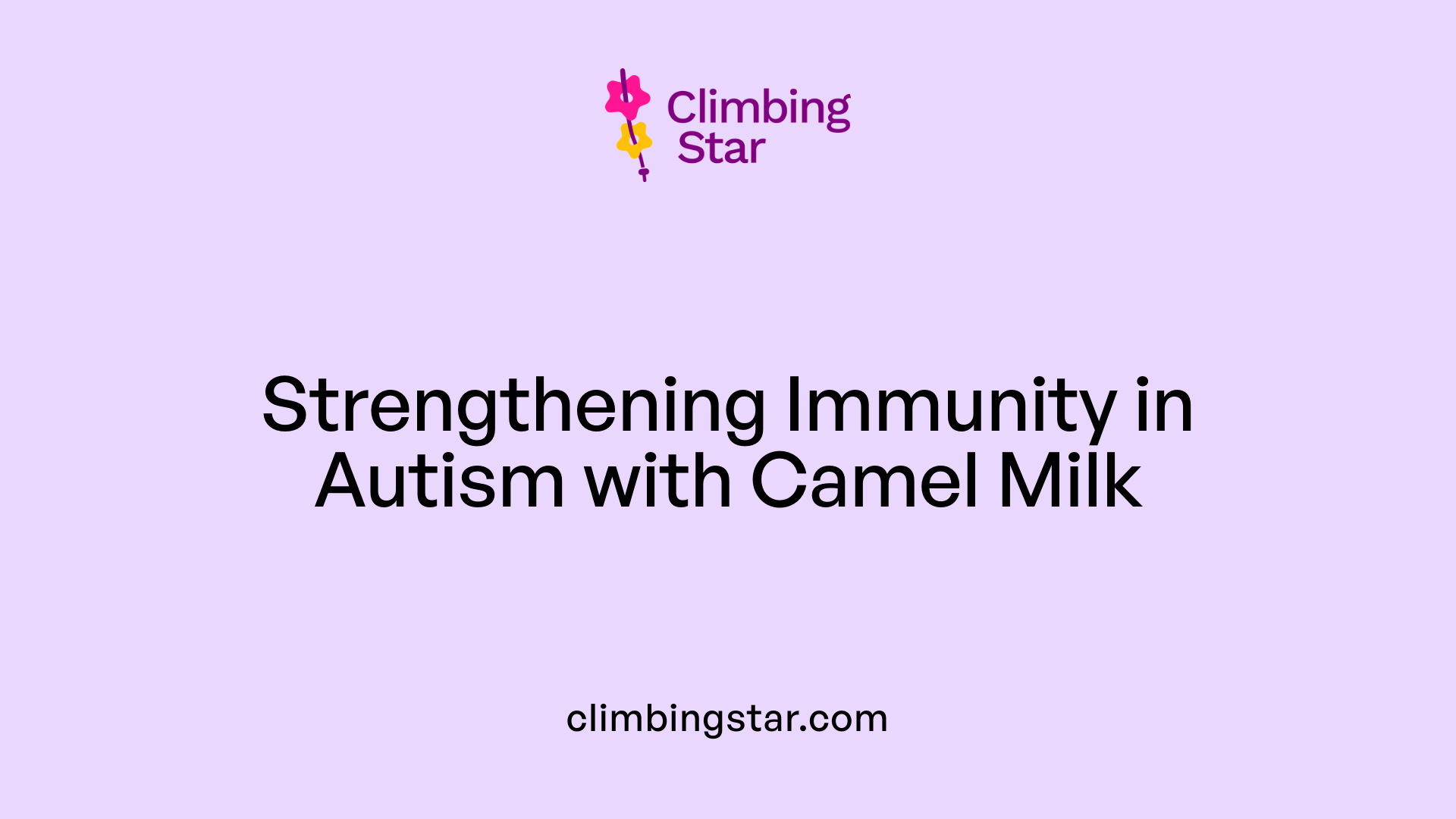
What Makes Camel Milk's Antibodies Unique?
Camel milk contains immunoglobulins—antibodies smaller than those found in humans. These smaller antibodies can more easily penetrate tissues, which enhances their ability to fight infections effectively. This unique structure contributes to camel milk’s powerful viral and bacterial defensive properties.
How Does Camel Milk Combat Infections?
The immune-boosting properties of camel milk are supported by its range of components, including lactoferrin, lysozymes, lactoperoxidase, and bioactive peptides. These elements work synergistically to provide antimicrobial effects that help reduce infections. This antimicrobial capacity is particularly helpful for combating food allergies and gut-related issues, which are often linked to immune system imbalances.
What Is the Impact on Immune Challenges in Children with Autism?
Children with autism frequently face nutrient deficiencies, inflammatory responses, and immune system irregularities. Clinical studies have shown that camel milk may support healing in these areas by modulating immune responses and reducing inflammation. For example, camel milk consumption has been associated with reduced neuroinflammation, as indicated by lower levels of inflammatory markers such as thymus and activation-regulated chemokine (TARC). These changes correlate with improvements in autism severity and behavior.
Together, these immune-related benefits of camel milk suggest its potential as a complementary dietary intervention to support immune health in children on the autism spectrum.
Evidence from Clinical Studies Supporting Camel Milk in Autism Care

What did the 2005 study by Dr. Reuven Yagil reveal?
Dr. Reuven Yagil's 2005 study was among the pioneering investigations into camel milk's effects on children with autism. The research reported positive outcomes, noting improvements in the behavioral symptoms commonly associated with autism spectrum disorder (ASD). This foundational study set the stage for more rigorous inquiries into camel milk as a potential therapeutic option.
How do randomized controlled trials support camel milk's benefits?
Several randomized controlled trials have since built on initial findings by demonstrating both behavioral and biochemical improvements in children with autism who consumed camel milk. These studies indicated that camel milk plays a role in reducing neuroinflammation and oxidative stress—two factors increasingly linked to autism symptoms. The trials reported reductions in biomarkers such as thymus and activation-regulated chemokine (TARC) and significant shifts in antioxidant enzymes and molecules that suggest enhanced immune function.
What findings emerged from double-blind, randomized clinical trials?
A notable double-blind, randomized clinical trial involving 65 children aged 2 to 12 years showed significant behavioral improvements in those consuming camel milk. Standardized assessment scales, including tools like the Childhood Autism Rating Scale (CARS), confirmed measurable changes. These improvements encompassed better social interaction and reduced repetitive behaviors, underlining camel milk’s potential as a supportive nutritional therapy.
Together, these clinical studies highlight camel milk's promising role in supporting children with autism by improving immune function, reducing inflammation, and mitigating behavioral symptoms.
Oxidative Stress and Neuroinflammation in Autism and the Role of Camel Milk
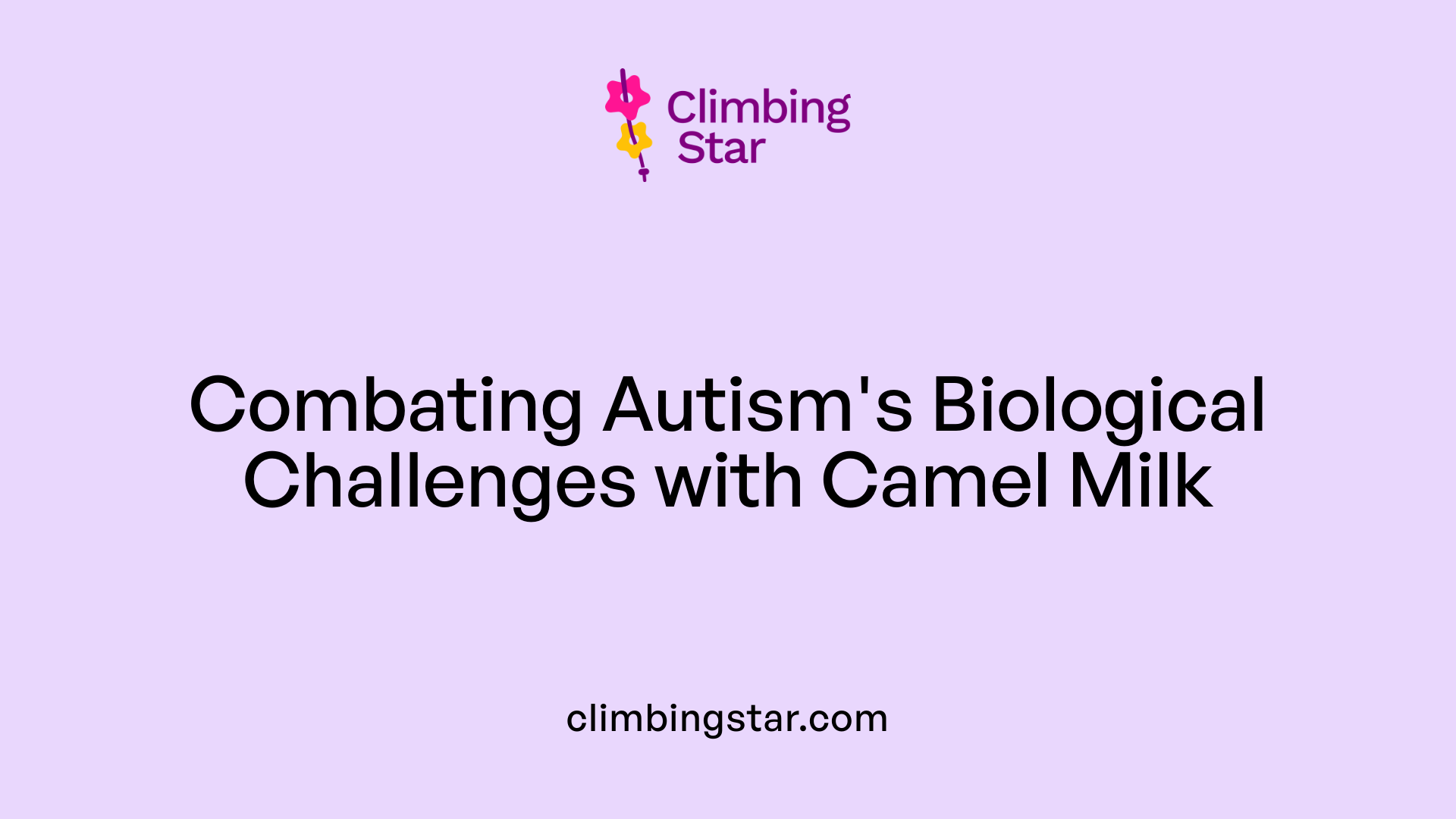
What is the link between oxidative stress, neuroinflammation, and autism symptoms?
Oxidative stress and neuroinflammation are significant contributors to autism spectrum disorder (ASD) symptoms. Elevated oxidative stress results in an imbalance between reactive oxygen species (ROS) and the body's ability to detoxify them. This imbalance can lead to neuronal damage and exacerbation of behavioral symptoms in autism. Additionally, neuroinflammation, often marked by increased levels of cytokines such as thymus and activation-regulated chemokine (TARC), aggravates the condition, further impacting brain function and behavior.
How does camel milk reduce markers like TARC and reactive oxygen species (ROS)?
Research shows camel milk can significantly reduce neuroinflammation and oxidative stress markers. Studies report that children with autism who consume camel milk exhibit lowered levels of TARC, a chemokine elevated in neuroinflammatory conditions such as ASD. Moreover, antioxidants in camel milk help decrease ROS, which are harmful compounds involved in the pathology of autism. These antioxidants neutralize ROS, reducing oxidative damage and associated inflammation.
What is camel milk's effect on antioxidant enzymes and molecules relevant to ASD?
Camel milk consumption positively affects key antioxidant enzymes and molecules involved in managing oxidative stress in autism. It alters levels of antioxidants such as glutathione, superoxide dismutase, and myeloperoxidase, which protect cells from oxidative damage. By boosting these enzymes and nonenzymatic antioxidant molecules, camel milk helps restore the oxidative balance in the body, correlating with observed behavioral improvements in children with ASD. This modulation of the antioxidant system supports healthier neuronal function and reduced autism severity.
Behavioral Improvements Observed with Camel Milk Consumption
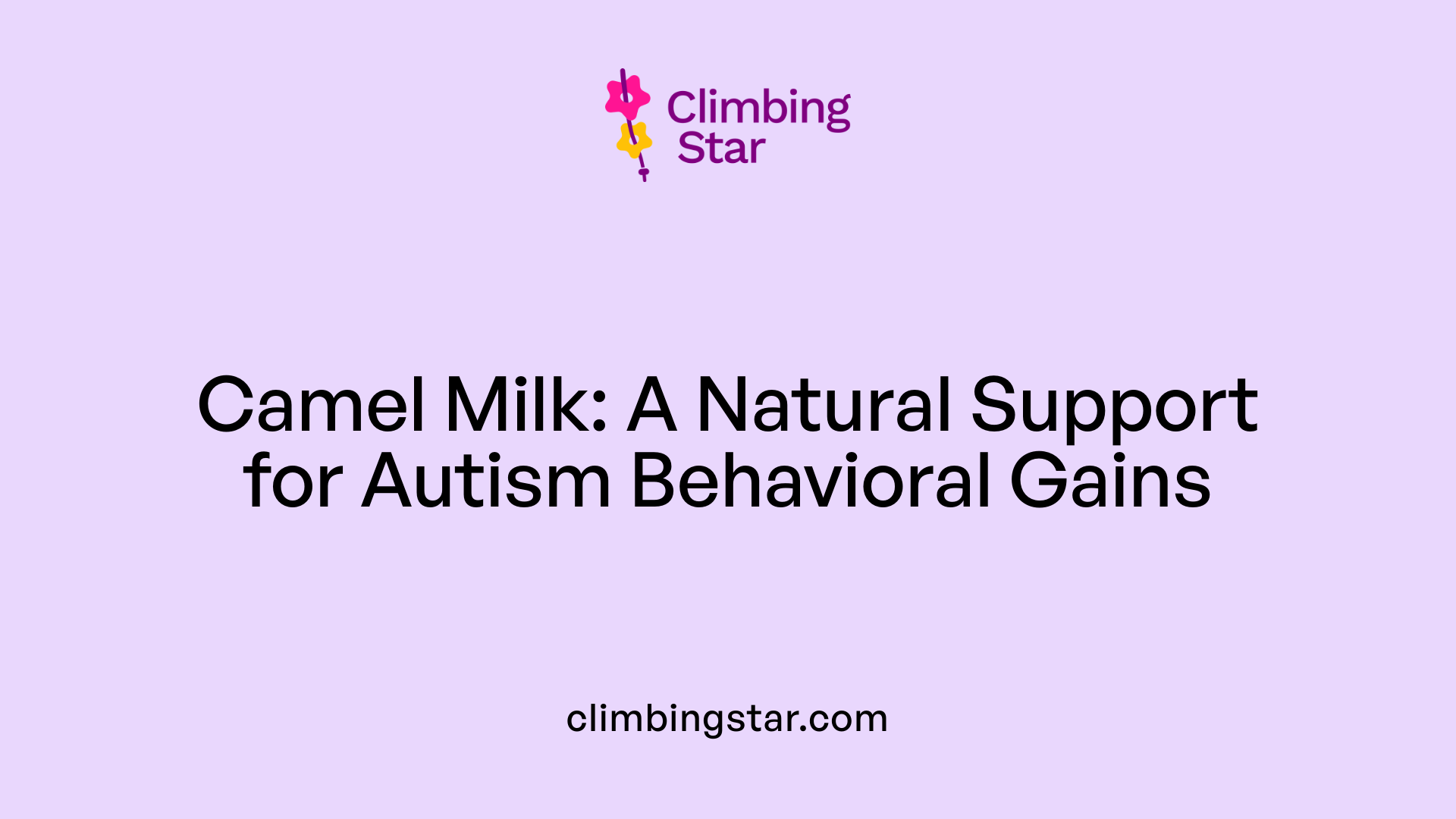
What Changes Have Been Observed in Autism Severity and Behavior Ratings?
Several clinical studies have reported notable improvements in children with autism spectrum disorder (ASD) after consuming camel milk. One key measure, the Childhood Autism Rating Scale (CARS), has shown significant reductions in autism severity scores following camel milk consumption. For instance, a double-blind, randomized clinical trial involving 65 children aged 2 to 12 observed meaningful behavioral improvements according to standardized assessment scales, highlighting the potential of camel milk as a supportive intervention in ASD.
How Does Camel Milk Affect Social Interaction and Repetitive Behaviors?
Beyond general behavioral improvements, camel milk has been linked to enhanced social interactions and a reduction in repetitive behaviors often seen in autism. Notably, animal studies, such as research conducted on autistic rats in 2021, demonstrated improved social behaviors and decreased repetitive actions. These findings suggest camel milk's antioxidant and immune-modulating properties may play a role in easing some of autism's core behavioral challenges.
What Evidence Comes from Human and Animal Studies?
The evidence supporting camel milk's behavioral benefits spans both human clinical trials and animal research. Human studies have documented improvements in biochemical markers and behavioral assessments, while animal models offer mechanistic insights, demonstrating how antioxidant components in camel milk might alleviate neuroinflammation and oxidative stress linked to autism. This combined evidence strengthens the case for camel milk's therapeutic potential in managing autism-related symptoms.
Bioactive Components in Camel Milk and Their Therapeutic Potential

What bioactive components are present in camel milk?
Camel milk contains several unique bioactive components including nanoparticles, lactoferrin, immunoglobulins, zinc, and fatty acids. These ingredients each play a role in boosting the immune system and supporting neurological health. Notably, the immunoglobulins found in camel milk are smaller than human antibodies, allowing them to penetrate tissues more effectively to fight infections.
How do these factors contribute to immune and neurological benefits?
The lactoferrin and immunoglobulins act as powerful antimicrobial agents, helping reduce infections and inflammation. Zinc and fatty acids further support brain function and help regulate immune responses. Together, these components combat oxidative stress and reduce inflammation that are often linked to autism spectrum disorder (ASD) symptoms.
What mechanisms underlie camel milk’s therapeutic effects in autism?
Camel milk’s antioxidant properties help decrease reactive oxygen species (ROS), which are involved in the brain’s oxidative stress seen in autism. By modulating antioxidant enzymes and molecules such as glutathione and superoxide dismutase, camel milk can reduce neuroinflammation. This has been linked with improvements in autism severity scores and behavioral symptoms like social interaction and repetitive behaviors. Clinical trials have reported that these combined immune-modulating and antioxidant effects contribute to camel milk’s potential therapeutic impact in children with autism.
Addressing Food Allergies and Gut Health Through Camel Milk
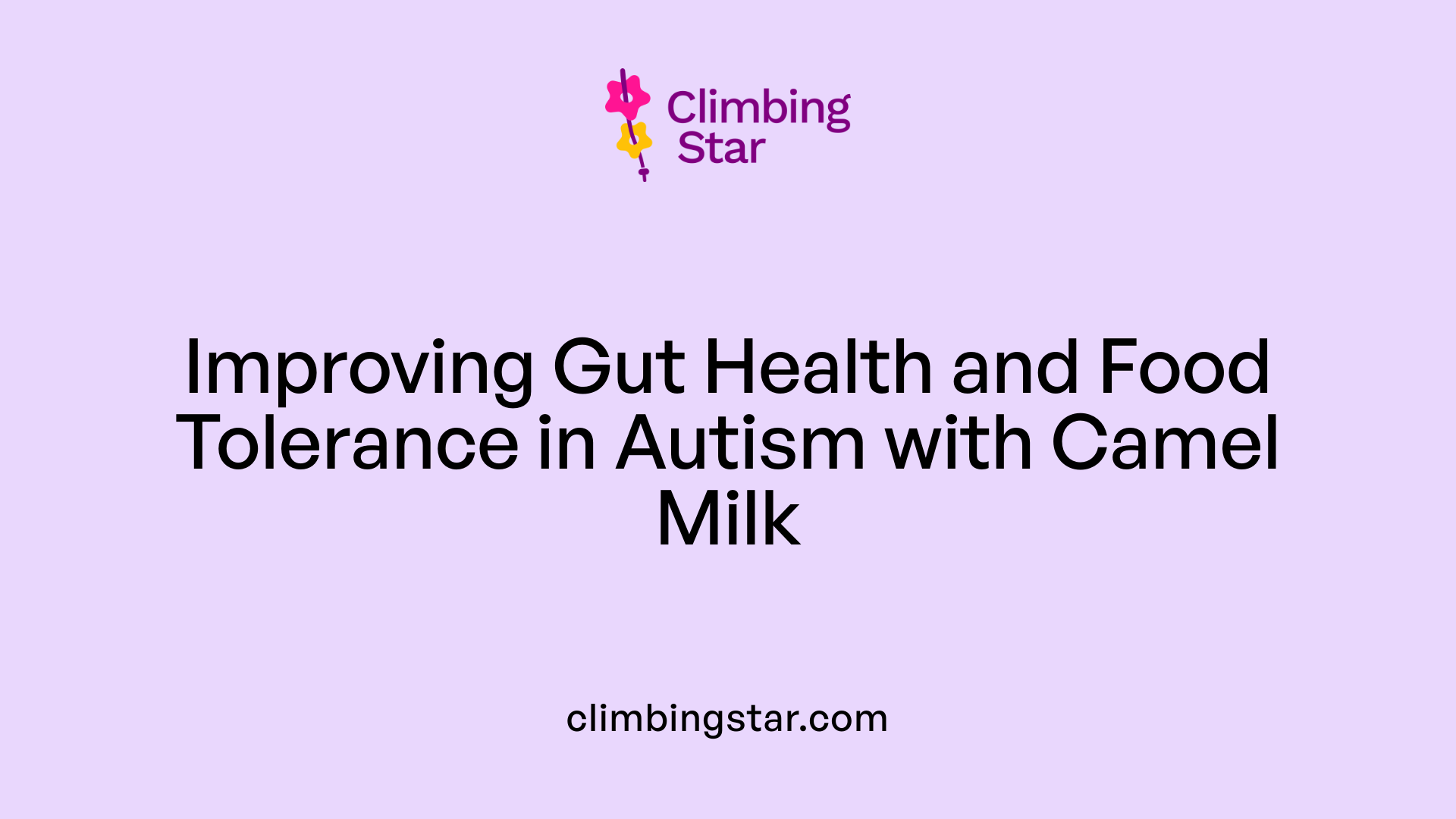
What Are Common Food Allergies and Gut Problems in Children with Autism?
Children with autism spectrum disorder (ASD) often experience food allergies and gut-related issues. These complications may include digestive discomfort, inflammation, and nutrient absorption difficulties, which can further impact their immune system and overall health.
How Does Camel Milk's Unique Casein Profile Reduce Allergic Reactions?
Camel milk contains a distinctive casein protein type different from that found in cow's milk. This unique casein profile does not trigger allergic reactions commonly seen in children with food allergies or autism. Unlike cow milk, which may contain casein types associated with sensitivities, camel milk's casein is less likely to cause adverse immune responses.
What Is the Role of Camel Milk in Healing Gut Inflammation and Improving Nutrient Absorption?
Camel milk's immune properties include unique antibodies and bioactive peptides that support healing food allergies and gut inflammation. These components might help combat viral and bacterial infections within the digestive tract, reducing inflammatory reactions. Moreover, camel milk is rich in vitamins and minerals such as vitamin C, iron, and calcium, which promote better nutrient absorption and address nutritional deficiencies common in children with autism.
By reducing gut inflammation and supporting immune function, camel milk contributes to improved digestive health and may alleviate some gastrointestinal symptoms associated with autism, thus aiding in better overall well-being.
Camel Milk's Antioxidant Properties and Immune Modulation

What antioxidants are present in camel milk?
Camel milk is rich in antioxidants including vitamins B and C, lactoferrin, lysozymes, lactoperoxidase, and bioactive peptides. These components have been shown to have immune-boosting and antimicrobial effects.
How do these antioxidants fight oxidative stress and boost immunity?
The antioxidants in camel milk reduce reactive oxygen species (ROS), which contribute to oxidative stress linked to autism spectrum disorder (ASD). By decreasing ROS, camel milk lowers inflammation and oxidative damage in the body. Lactoferrin and immunoglobulins in camel milk also enhance immune function by penetrating tissues and targeting viral and bacterial infections more efficiently than some human antibodies.
In what ways can camel milk support CNS function and reduce inflammation in ASD?
Camel milk’s antioxidants help modulate immune responses in the brain, decreasing neuroinflammation. Studies report significant reductions in inflammatory markers such as thymus and activation-regulated chemokine (TARC) levels in children with ASD after consuming camel milk. This decrease correlates with improved autism severity scores and behavioral outcomes. Additionally, bioactive peptides, zinc, and fatty acids in camel milk's nanoparticles contribute to its therapeutic effects on the central nervous system.
Together, these antioxidant and immune factors make camel milk a promising natural support for reducing oxidative stress and inflammation, potentially improving CNS function and behavioral symptoms in autism spectrum disorder.
Potential Integration of Camel Milk with Conventional Behavioral Therapies
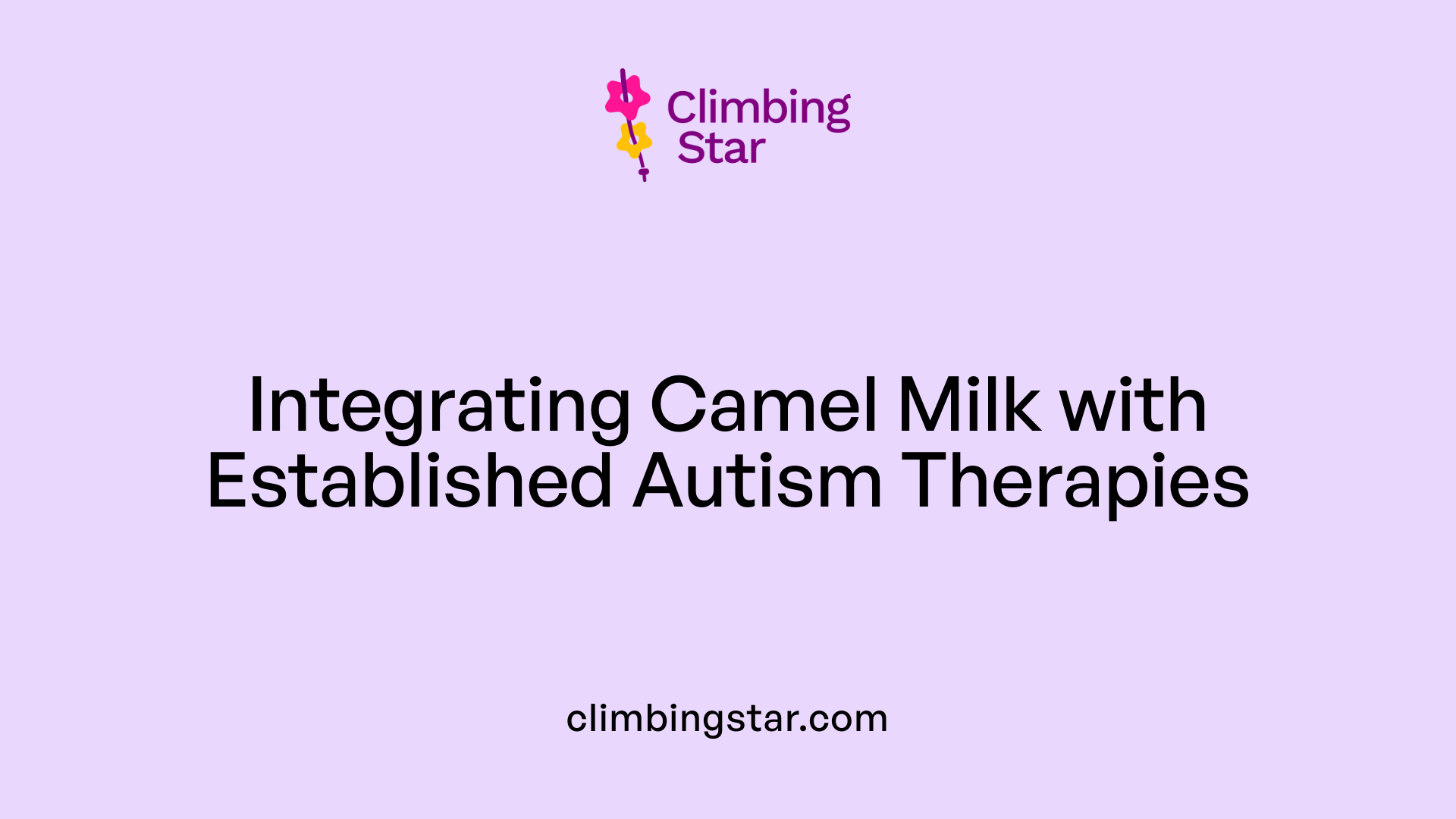
Complementing ABA and other structured behavioral interventions
Camel milk shows promise as a complementary approach to applied behavioral analysis (ABA) and other structured behavioral therapies for autism spectrum disorder (ASD). While ABA focuses on skill development and behavior modification, camel milk's immune-boosting and antioxidant properties may address underlying physiological factors such as inflammation and oxidative stress, which can influence neurological function and behavior. Integrating camel milk could potentially enhance treatment outcomes by supporting immune health and reducing neuroinflammation.
Holistic approaches for improving quality of life in autism
A holistic approach combining camel milk consumption with behavioral therapies may offer a more comprehensive support system for children with autism. The nutritional richness of camel milk—being high in vitamin C, iron, calcium, and containing unique antibodies and bioactive peptides—can help alleviate nutritional deficiencies common in children with autism. Additionally, its ability to reduce oxidative stress and improve gastrointestinal symptoms further supports overall well-being, potentially leading to better social interactions and reduced repetitive behaviors.
Considerations for families and practitioners when adding camel milk
Families and healthcare practitioners interested in integrating camel milk into autism treatment plans should consider several factors. First, camel milk must complement, not replace, established behavioral therapies like ABA. Second, dosage, source, and possible allergies need to be carefully evaluated, even though camel milk has a unique casein profile less likely to provoke allergic responses. Third, while existing randomized clinical trials and meta-analyses show encouraging results, larger-scale studies are needed to confirm long-term benefits and safety. Close monitoring of behavioral and physiological responses during camel milk supplementation is recommended to optimize individualized care.
Need for Further Research and Large-Scale Clinical Trials

Current limitations in research data on camel milk for autism
Despite promising initial findings, the current body of research on camel milk's effects in autism is limited by small sample sizes and variability in study designs. Many studies involve a limited number of participants, often lacking broader demographic diversity which is essential for generalized conclusions. Additionally, some studies rely on subjective assessments of behavioral improvements, which can introduce bias or inconsistency.
Importance of larger, controlled studies to confirm efficacy and safety
To establish camel milk as a credible therapeutic option for autism spectrum disorder (ASD), larger randomized controlled trials with standardized protocols are crucial. Such studies would help confirm not only the behavioral and biochemical benefits but also ensure safety profiles across age groups and long-term usage. Greater statistical power will enable clearer understanding of camel milk’s mechanisms and its varying impacts on immune system modulation, neuroinflammation reduction, and oxidative stress.
Encouraging trends from meta-analysis and future directions
Recent meta-analyses highlight encouraging trends regarding camel milk’s potential therapeutic effects for central nervous system disorders, including autism. These analyses advocate for comprehensive future investigations that delve into its bioactive components—such as lactoferrin and antioxidants—and their exact role in symptom improvement. Furthermore, integrating biomarker evaluations with behavioral assessments in future trials could provide a more holistic view of treatment effects.
Expanding and rigorously conducting clinical research on camel milk will be essential to move from preliminary evidence to established clinical practice, offering hope for improved management of autism-related symptoms.
Safety and Practical Considerations for Families Exploring Camel Milk
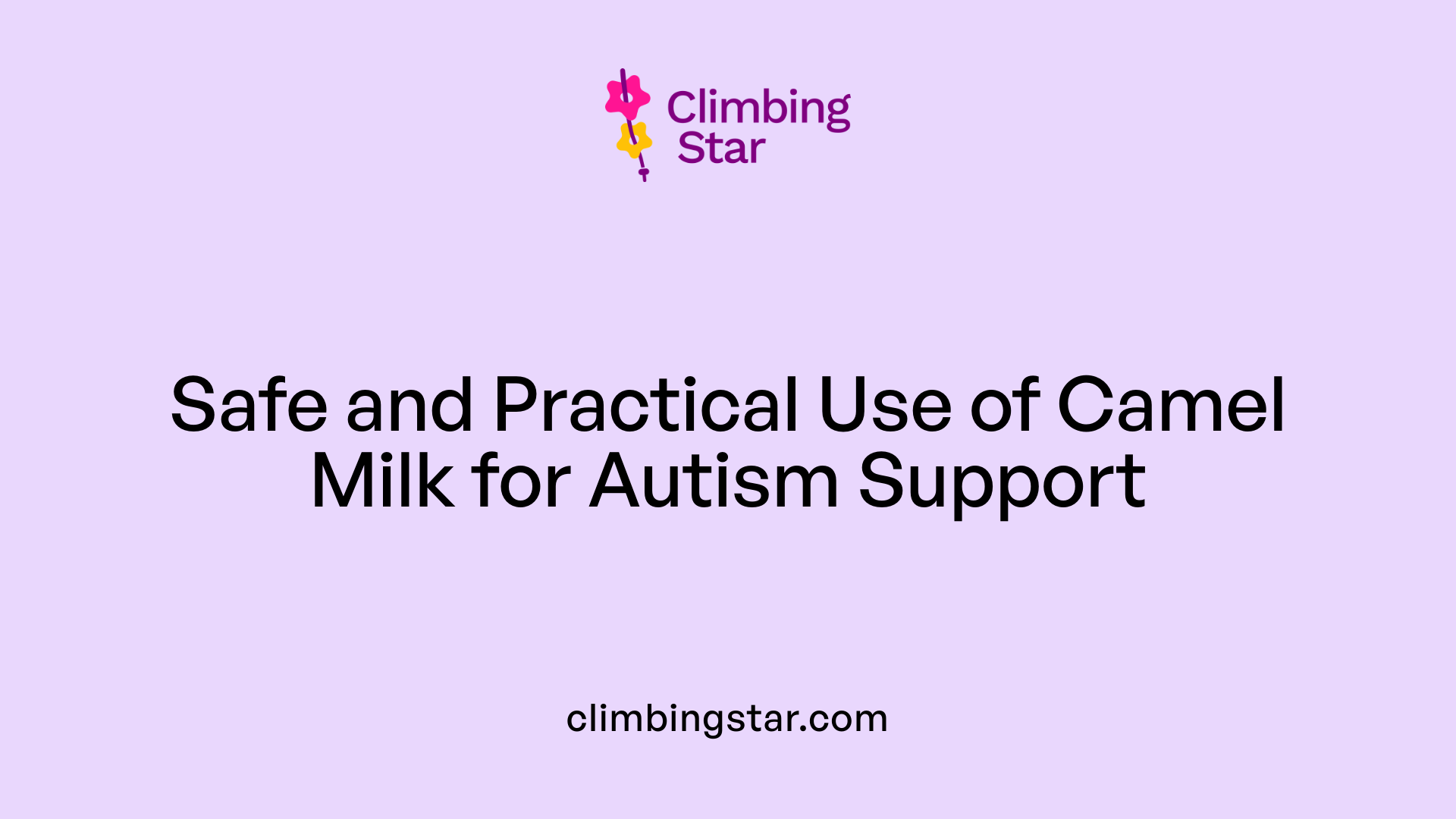
Nutritional Safety and Allergy Considerations
Camel milk is generally considered safe and highly nutritious, containing more vitamin C, iron, and calcium than cow's milk. Importantly, its unique casein profile tends not to trigger allergic reactions in children with autism or those with food allergies. However, like any new dietary intervention, families should be vigilant for any adverse reactions, especially in children who have sensitive immune systems.
Availability and Sourcing of Camel Milk
Sourcing genuine camel milk can be challenging, depending on geographic location. It is often found in specialty health stores or through certified online suppliers. Ensuring the milk is fresh, pasteurized, and sourced from reputable producers is vital to maintain safety and efficacy. Parents should avoid unpasteurized milk to reduce the risk of infections.
Guidance for Healthcare Consultation and Monitoring Outcomes
Before starting camel milk therapy, families should consult healthcare providers knowledgeable about autism and nutritional therapies. Careful monitoring of behavioral and biochemical responses is important, as several clinical studies associate camel milk consumption with improvements in autism symptoms. Regular follow-ups allow adjustments to the regimen and help identify any side effects early. Collaboration with medical professionals ensures the milk complements other therapeutic approaches safely and effectively.
Conclusion: Camel Milk's Emerging Role in Autism Support
The emerging body of research and clinical experience points to camel milk as a promising complementary intervention in autism care. Its unique immune-enhancing, antioxidant, and nutritional properties offer supportive benefits that target core challenges faced by children with autism, including immune dysfunction, oxidative stress, and behavioral difficulties. While Applied Behavior Analysis remains a cornerstone in managing autism's behavioral aspects, camel milk may provide an adjunctive approach helping to reinforce health and functional outcomes. Nevertheless, broader clinical trials and further scientific exploration are necessary to fully establish its therapeutic potential and safety profile. For families and practitioners seeking integrative strategies, camel milk represents a natural, multifaceted option worthy of consideration in a comprehensive autism care plan.







